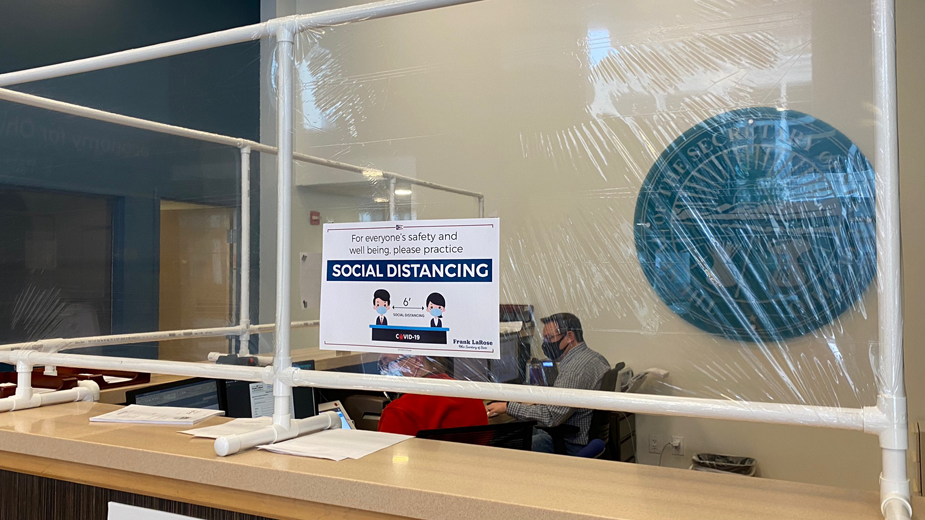Ohio Department of Health Delays Full Records Release Despite Court Order
By Boniface Womber
This article provided by Eye on Ohio, the nonprofit, nonpartisan Ohio Center for Journalism. Please join our free mailing list as this helps us provide more public service reporting.
Despite an Oct. 20 court order issued by the Ohio Court of Claims, the Ohio Department of Health still had not released complete records as of late Wednesday night, claiming they needed several days to release information from a database that is updated daily.
During Gov. Mike DeWine’s Tuesday press conference, he said the current number of beds, ventilators and other medical equipment available for each Ohio hospital will be released on a daily basis.
“There is no reason why we can’t release that that I am aware of,” DeWine said. “And I’m not sure exactly sure how we are going to release it, but we should be able to get that out. This is all data that we are getting from the hospitals around the state.”
Eye on Ohio originally requested the data March 19 and filed suit April 29. Numerous delays by the Department of Health included late responses on four separate occasions. After briefings concluded, Special Master Jeff Clark ruled in Eye on Ohio’s favor Oct. 20. The department did not object to the ruling within the time allowed by law. The Court of Claims adopted the special master’s recommendation on Nov. 10.
Eye on Ohio made multiple requests for access or the records on Nov. 12 and 13. Department of Health lawyer Socrates Tuch advised that the agency was preparing a data extract and would provide the information “on a rolling basis.” But he gave no date or time when the materials would be provided. When the materials still weren’t provided after additional calls, Eye on Ohio visited the Department of Health offices, only to be told by Tuch to stop going there.
Despite DeWine’s statement, Eye on Ohio has still not received the requested data.
Tuch told Eye on Ohio that the agency anticipated providing the requested data by Nov 20. When pressed further for a prompt response without delay, Tuch declined to say he was working on the records. Contradicting his earlier email, Tuch also implied that reporters would have to file a new request for the records every day.
Eye on Ohio received incomplete records via a Zip file at 6:03 p.m Wednesday. It is unclear why records are incomplete.
The records contain most bed capacity information from local hospitals from late March, but records abruptly end on Oct. 30. At press time, it was not clear why. On that date, 33 hospitals reported zero beds available for adults in the “Med/Surg” and “Critical Care” categories at some point during the day.
The data also contains a record of the number of ventilators available, but most other medical equipment numbers are missing. ODH said they had no data on staffing levels.
Ohio’s public records law and the court’s order call for state agencies to provide the public records, as opposed to edited summaries that might pick and choose which information is provided. For the records on the SurgeNet database, this could be done in multiple ways. The department could grant a login and password with limited access so Eye on Ohio could download the public records directly. The department could provide an Excel-compatible document with each day’s data for all hospitals via a ZIP file or DropBox link. Or, the agency could provide screenshots with the requested records for each day.
At Tuesday’s press conference, DeWine stated that daily new coronavirus cases have been fluctuating between 7,000 and 8,000 cases for about a week. Whereas six weeks ago, Ohio was only at 1,000 coronavirus cases.
When a news story is as pressing as the COVID-19 pandemic, the scope of a reasonable time for producing public records can be as short as hours, versus weeks. The need for accurate, complete and up-to-date public records is more urgent now more than ever.
At the beginning of his press conference Oct. 13, DeWine said, there were 1,000 people in Ohio hospitals who had COVID-19. Since then, the number has only continued to rise. As of Wednesday, there were 22,846 hospitalizations in Ohio.
Lt. Gov. Jon Husted said more measures were needed to try to stem the flow of the virus before it overwhelmed the health system.
“When we had these long discussions over the past week, the hospital officials said look that’s the goal. Everything that contributes to people coming together is the cause. And everything that we can do to prevent people from coming together is the solution,” he said. “It will be difficult but we will all get through it.”
Pictured: Ohio Department of Health offices in Columbus.
Copyright 2024 The Business Journal, Youngstown, Ohio.



